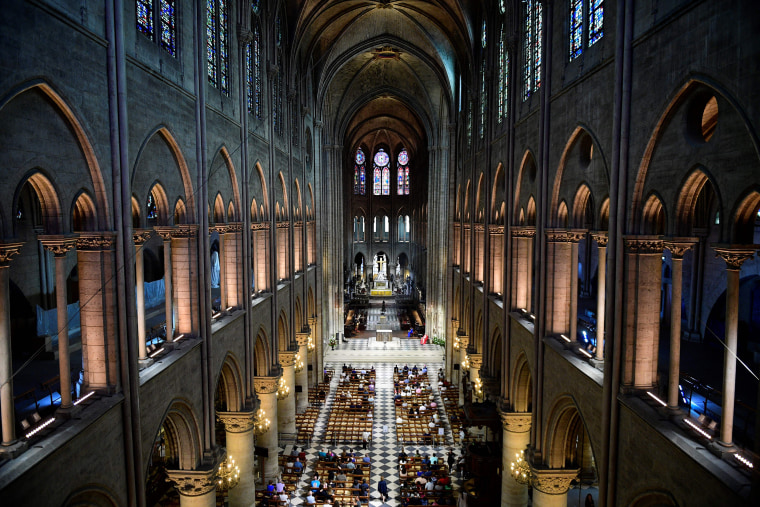The Notre Dame Cathedral has long been regarded as a spiritual beacon, architectural marvel, monument to Parisian beauty and a towering symbol of French national pride.
But the flames that engulfed the centuries-old structure on Monday threatened to demolish part of that rich cultural legacy, alarming admirers and worshipers around the world.
"It is bone-chilling. It is heartbreaking," Caroline Bruzelius, a professor of architectural history at Duke University, said of the blaze at the cathedral, built in the 12th and 13th centuries.
The fire's cause was not immediately known, but the French minister of the interior said late Monday that both towers of the cathedral were "safe" and the fire had weakened as they raced to save works of art.
Notre Dame, one of the world's most visited and photographed landmarks, is inextricable from French history, Bruzelius said. Napoleon was crowned there, and it has hosted other major ceremonies in the pulsing heart of the City of Lights.
It is also a global icon: the setting of Victor Hugo's classic novel "The Hunchback of Notre-Dame," the luminous backdrop for numerous films, the subject of a somber painting by Henri Matisse, and an inspiration to legions of tourists for much of modern history.
It was Hugo's 1831 novel, a gothic romance about the deformed bell-ringer Quasimodo, that helped resurrect public interest in the cathedral, which had been badly desecrated amid the tumult of the French Revolution.
"The novel made people realize that the cathedral, which in some respects is the protagonist, was a national treasure," Bruzelius said. "It came to represent Paris around the world, along with the Eiffel Tower."
Download the NBC News app for breaking news and updates on the Notre Dame fire.
"The Hunchback of Notre Dame" helped inspire other popular works. Hugo's novel has been adapted into at least a dozen short and feature-length films, including a 1996 animated Disney movie of the same name.
The soul-stirring power of the cathedral itself, with its massive stained-glass windows and spire, made brief but memorable appearances in films such as "The Aristocats," "Ratatouille" and Woody Allen's "Midnight in Paris."
Notre Dame's stunning French Gothic architecture is widely seen as an emblem of the style, a testament to both religious grandiosity and fine-grained sculptural detail.
"It is one of the masterpieces of Gothic architecture," the French government tourism site says. "More than a historical monument, this cathedral is above all 'the House of God and the abode of men ... '"
Camille Pascal, a French writer and historian, said the mammoth blaze has already caused "the destruction of invaluable heritage." The spire ruined in the fire, like much of the cathedral itself, contained artifacts considered sacred to Roman Catholics, including a relic believed to be from Jesus Christ's crown of thorns.
"It's been 800 years that the cathedral watches over Paris," Pascal told French broadcaster BFMTV, with the cathedral's bells tolling for both "happy and unfortunate events," such as the November 2015 Paris terror attacks.
The cathedral, built on the ruins of two earlier churches, has suffered all manner of damage and decay over the centuries — most violently during the French Revolution, when it was deconsecrated and saw many of its sculptures beheaded or smashed.

In the mid-19th century, the cathedral went through a major restoration under the French architect Eugène Viollet-le-Duc. In 1991, $19 million was set aside for a project to replace loose stones. In 2013, nine bronze bells were made to replace deteriorating artifacts.
Bruzelius, who has written extensively about the construction of the cathedral, said on Monday that she is intimately familiar with every nook and cranny of the structure.
"When they were cleaning and renovating the cathedral in the late 1970s and early '80s, I may have been the only person who went up the scaffolding over and over and over again," she said.
As part of her academic research, she measured the masonry, scrutinized the molding and studied the religious iconography, including the statues of saints. For her, Notre Dame is exalted ground.
"Why do tourists flock to it? Why do people come from around the world? Because it is just one of those monuments that is simply transcendental," Bruzelius said.

